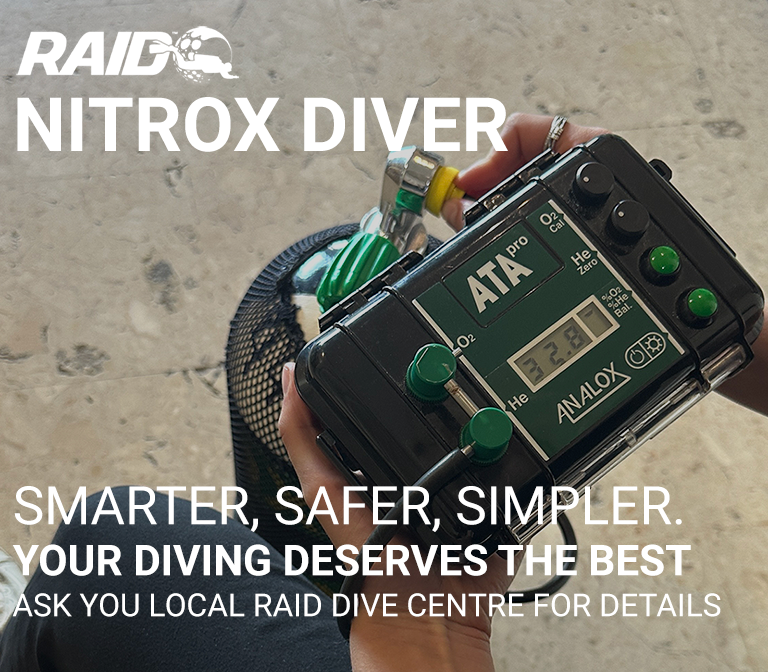RAID MAKES BREATHING THE GOOD STUFF EASY

More bottom time very quickly adds up to more fun, so what’s stopping you from making it happen for you?
We know that nitrox is not available to divers in some spots around the world, but if it is available locally (and certainly when you travel to go diving), you really must add it to your diving toolbax.
Diving with nitrox (enriched air) instead of compressed air offers a tonne of benefits that make it well worth earning a certification. And we make certifying through RAID easy and fun.
Your first step is to read more about it at our FREe-Learning storefront. Then choose a RAID Dive Centre and start breathing the good stuff. You will not regret it.
Just a reminder of some of the most obvious benefits of Nitrox.
- Extended Bottom Time: Nitrox has a higher oxygen content than compressed air, which can allow for longer no-decompression limits compared to traditional air diving. This means you can potentially stay underwater for a longer period, especially on repetitive dives.
- Reduced Nitrogen Uptake: With lower nitrogen levels in nitrox, divers may experience less nitrogen absorption during dives. This can potentially reduce the risk of decompression sickness and fatigue, especially on multiple dives in a day.
- Quicker Surface Intervals: The reduced nitrogen in nitrox can lead to shorter surface intervals between dives, allowing you to make more repetitive dives in a day compared to diving on compressed air.
- Enhanced Safety Margins: Nitrox can provide greater safety margins, especially for divers conducting multiple dives or diving deep, by reducing the risk of nitrogen narcosis and decompression sickness.
Earning a certification in nitrox diving will teach you how to properly plan and conduct nitrox dives, understand the benefits and limitations of using nitrox, and handle the specific considerations associated with diving with enriched air. It can be a valuable certification for those looking to extend their bottom time, dive more safely, and explore new dive opportunities.

One vital last point. ALWAYS ANALYSE AND LABEL YOUR NITROX CYLINDERS BEFORE THEY GO INTO THE WATER!

